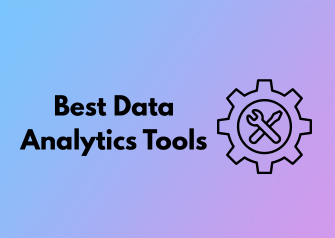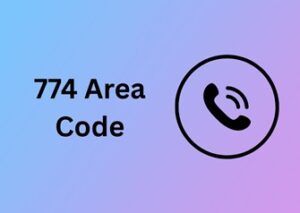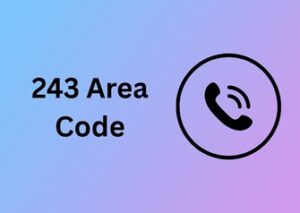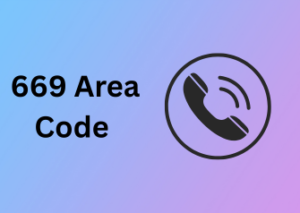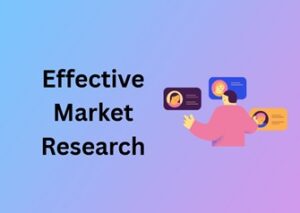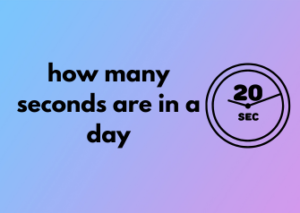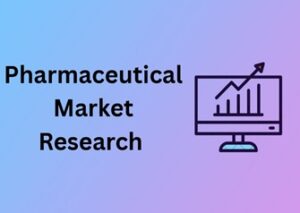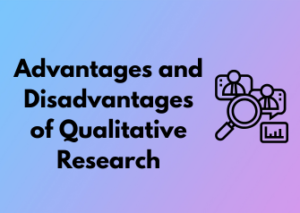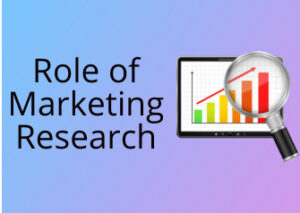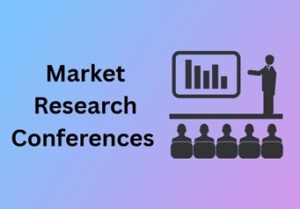Let’s face it: we live in a world ruled by data, and PR agencies aren’t sitting on the sidelines. If anything, they’re leading the charge, using cutting-edge tools like AI-driven analytics to stay ahead of competitors and deliver measurable results. But what exactly does AI-driven analytics bring to the table for PR professionals, and how is it shaping the industry?
Understanding AI-Driven Analytics
AI-driven analytics refers to leveraging artificial intelligence to process massive amounts of data in seconds, recognizing patterns, and generating actionable insights. In a PR agency setting, this is a total game-changer. Imagine being able to predict audience behavior, craft custom campaigns, and even get suggestions for improvement without having to pore over spreadsheets for hours!
What Makes AI-Driven Analytics Essential for PR Agencies?
The main advantage of AI-driven analytics lies in its ability to analyze unstructured data. PR professionals deal with an overwhelming amount of information—from press clippings to social media updates to customer feedback. AI steps in to make sense of it all. Here’s how it helps:
- Improved Decision-Making: AI tools can sift through data and pull out key metrics that allow PR teams to make smarter, faster decisions. No more second-guessing whether a specific campaign is resonating with your target audience!
- Efficiency at Scale: Manually analyzing huge data sets is nearly impossible for humans. AI tools take care of this, allowing agencies to work on multiple campaigns simultaneously while maintaining accuracy.
- Highly Tailored Insights: AI can learn audience preferences and deliver hyper-targeted content suggestions, helping agencies personalize campaigns and stand out in crowded markets.
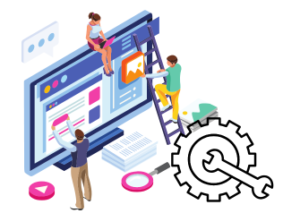
Popular AI-Driven Tools Used by PR Agencies
Here’s the juicy part: some incredible tools are already leading the way in this space. If you’re in PR, you’ve probably heard of platforms like Brandwatch and Crimson Hexagon, which can monitor brand reputation, track competitor movements, and provide real-time insights. Similarly, AI tools like MediaVision’s AI Dashboards help transform campaign tracking by combining analytics with content performance insights.
Tips for Implementing AI-Driven Analytics
Does this sound like a dream come true? Well, before you dive in, here are some friendly tips for getting started with AI analytics:
- Define Clear Objectives: Know why you’re adopting AI analytics. Are you looking to measure influencer performance or improve ROI on campaigns? A clear goal will help you pick the right tools.
- Start Small: AI tools can be overwhelming if you attempt too much at once. Begin with specific, manageable tasks and scale as you grow more comfortable.
- Don’t Ignore Training: Equip your team with proper training to use the tools effectively. AI is a partner, not a magic wand, and your people will need to understand how to interpret the data it spits out.
The Human-AI Collaboration
While AI analytics brings unparalleled capabilities to the table, it’s important to remember that it’s a complement to—not a replacement for—human expertise. PR remains a deeply creative field, and the insights provided by AI can empower professionals to be more strategic and impactful. AI crunches the numbers, but it’s up to you to get creative with applying them.
So, what are you waiting for? With AI-driven analytics, your PR agency could be just a few clicks away from delivering campaigns that not only resonate but also achieve measurable success. The future is here—ready to embrace it?
Integrating Social Listening Tools with Performance Metrics
In the ever-evolving world of public relations, staying ahead of conversations happening across the vast digital landscape is no small feat. This is where social listening tools come into play. But PR agencies don’t just stop at listening – they take it a step further by combining these insights with performance metrics. Let’s dive into why this integration is powerful and how it helps PR professionals thrive.
What is Social Listening?
Social listening is essentially the practice of tracking and analyzing online conversations about a brand, topic, or competitor. Tools like Brandwatch, Talkwalker, or Sprinklr can sift through massive amounts of data from platforms like Twitter, Instagram, and news forums. The end result? Meaningful insights about what people are saying, feeling, and sharing.
But here’s the thing: capturing this chatter is only half the story. If you don’t connect these insights with measurable outcomes, you’re essentially leaving data on the table.
Drawing the Connection: Listening Meets Metrics
PR agencies that integrate social listening with performance metrics can go beyond simply knowing what’s being said. They can also understand how these conversations drive results. For instance:
- Audience Engagement: Tracking the volume and tone of mentions alongside website traffic helps gauge whether social buzz translates into site visits or newsletter signups.
- Campaign Success: Analyzing social data next to ad impressions, click-through rates, or earned media value highlights how well your messaging resonates with the target audience.
- Crisis Management: By monitoring spikes in negative sentiment against PR actions (like press releases or damage control strategies), agencies can adjust in real time and measure the impact of their responses.
The Right Tools: Making Integration Smooth
Here’s a quick tip: To successfully blend social listening insights with performance metrics, leverage platforms that either have robust all-in-one capabilities or sync easily with analytics tools. Some great options include:
- Hootsuite: It integrates seamlessly with Google Analytics, allowing you to monitor social performance and web traffic impact all in one dashboard.
- Sprout Social: Known for its reporting features, it lets users track everything from keyword trends to branded hashtag performance alongside engagement rates.
- Meltwater: This combines social insights with comprehensive campaign reporting, so you can identify what’s working and pivot quickly if needed.
Set Goals, Then Measure
It’s critical to remember that this approach works best when PR teams set clear, measurable goals beforehand. Are you trying to grow your audience in a specific demographic? Is your focus on boosting brand reputation post-crisis? Or do you want to evaluate how your recent product launch is being received? Defining these goals first ensures that you’re pulling actionable insights from monitored data rather than just collecting it for the sake of it.
Why It Matters
The magic of combining social listening tools with performance metrics lies in the clarity it brings. Instead of relying on gut instinct or anecdotal evidence, PR teams can draw on hard numbers to inform strategy, improve campaigns, and ultimately deliver better results for their clients. And as any PR pro will tell you, there’s nothing quite like the combination of listening, learning, and succeeding – all with data to back it up!
So, if your PR agency isn’t already marrying these two realms, it’s time to invest in tools, training, and techniques that help bridge the gap. Your clients (and your campaigns) will thank you.
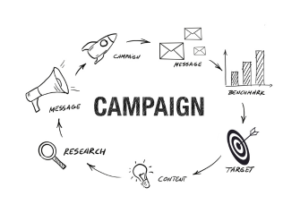
Understanding Sentiment Analysis for Better Campaign Management
When it comes to public relations (PR), understanding how people feel about your brand, campaign, or messaging can be a game-changer. This is where sentiment analysis steps in to save the day. But what exactly is sentiment analysis, and how can it help PR agencies craft better campaigns? Let’s dive into this fascinating aspect of data analytics and discover why it’s an essential tool in your PR arsenal.
What Is Sentiment Analysis?
At its core, sentiment analysis is all about human emotions. It’s a process that uses advanced natural language processing (NLP) and machine learning algorithms to analyze online conversations, reviews, and other text-based data. The goal is simple: to determine whether the overall sentiment underneath the words is positive, negative, or neutral.
For PR agencies managing campaigns, this means they can actively track how people feel about their clients’ brands on social media, in the news, or across forums and reviews. In a world that moves as quickly as ours, having this eye on public perception can prevent a PR crisis—or even spark the next big success story.
Why Does Sentiment Analysis Matter?
In PR, appearances and timing are everything. Modern sentiment analysis tools do much more than just tell you if people are happy or mad at a particular moment in time. These tools can actually help you:
- Monitor brand perception: Sentiment analysis scans countless mentions of your brand to give you a clear picture of public opinion—and any changes in it.
- Respond quickly to challenges: If sentiment starts to turn negative after the launch of a campaign, PR teams can identify the cause and address it before it spirals into a larger issue.
- Fine-tune messaging: By analyzing patterns in audience sentiment, you can figure out what works and what doesn’t, ensuring your campaigns strike the right emotional chord.
How PR Agencies Use Sentiment Analysis Tools to Win Big
PR professionals are increasingly leveraging sentiment analysis tools to stay in tune with their audiences. These tools empower agencies by adding a layer of data-backed insights to traditional tactics. Here are some practical ways sentiment analysis is used:
- Launching new products or campaigns: Before, during, and after a product launch, PR agencies monitor real-time sentiment data to measure audience reception.
- Handling crises: Negative press? A sudden Twitter storm? Sentiment analysis alerts you when the mood shifts, giving PR teams a chance to act quickly and smartly.
- Measuring campaign success: Beyond page views or clicks, sentiment analysis provides an emotional barometer to judge whether your campaign truly resonates with people—not just their eyes but their hearts.
Popular Tools for Sentiment Analysis
There’s no shortage of powerful tools to help PR agencies perform sentiment analyses effortlessly. Here are a few favorites:
- Brandwatch: A sophisticated tool for tracking sentiment across a wide range of platforms, offering deep insights into how people feel about your brand.
- Talkwalker: Known for its AI-driven sentiment tracking across global mentions, making it ideal for international campaigns.
- Hootsuite Insights: Combines social listening with actionable sentiment data, giving a full picture of social media reactions.
The Future of Campaign Management with Sentiment Analysis
The beauty of sentiment analysis goes beyond its current capabilities. With advancements in AI, PR agencies are now moving toward even more precise predictions of public sentiment. Imagine being able to anticipate how people will react to a certain campaign idea before it hits the public—a real superpower for PR professionals.
So, if you’re looking to refine your campaigns, boost brand reputation, or just stay ahead of the curve in today’s competitive PR world, sentiment analysis is your go-to tool. It’s like having a crystal ball, giving you insight into the hearts and minds of your audience, and helping you steer your brand in the right direction.
Real-Time Data Dashboards and Why They Matter for PR Teams
Picture this: you’re part of a PR team managing a high-profile product launch. Social media mentions are surging, website traffic is spiking, and stakeholders want updates—now. How do you stay on top of it all? Enter real-time data dashboards, the ultimate command center for PR professionals who need to make informed decisions, fast.
What Are Real-Time Data Dashboards?
At their core, real-time dashboards aggregate and visualize data as it happens. These are user-friendly platforms that pull information from multiple sources and display it in a single, customizable interface. For PR professionals, this means tracking campaign performance, media engagement, and audience behavior without having to constantly switch between tools.
Think of these dashboards as personal assistants—ones that don’t sleep and are constantly combing through data to give you instant insights. The value for PR teams comes down to their ability to react quickly and adjust campaigns in the heat of the moment.
Key Benefits of Real-Time Dashboards for PR Teams
Let’s break down why these tools matter so much for public relations:
- Instant Decision-Making: In the fast-paced world of PR, timing is crucial. Real-time dashboards let you monitor metrics like website visits, social media sentiment, and media coverage as they happen. Running an event? You can see its impact unfold right before your eyes.
- Comprehensive Overview: Dashboards pull data from multiple sources—Google Analytics, social media platforms, email marketing tools, and more. Instead of juggling spreadsheets and apps, you get a bird’s-eye view of your entire strategy in one place.
- Error Reduction: Manual data entry can lead to mistakes and slow down analysis. Real-time dashboards are automated, ensuring your data is accurate and reducing the risks of human error.
- Engagement Monitoring: Want to know how people are responding to your latest press release or influencer collaboration? Dashboards track engagement metrics like clicks, shares, and mentions to keep you informed.
Real-Life Applications
Still wondering how dashboards fit into your day-to-day workflows? Here are some real-life scenarios:
- Managing a Crisis: Imagine dealing with a PR crisis—real-time data helps you gauge public sentiment and monitor the spread of key messages, allowing you to respond strategically.
- Event Monitoring: Running a live event? Use dashboards to track hashtag usage, social media interactions, and traffic spikes to measure the success of your activations.
- Proving ROI: When presenting to stakeholders, real-time dashboards provide immediate, visually-appealing data to highlight progress and justify budgets.
Choosing the Right Dashboard
Not all dashboards are created equal. When selecting one for your PR team, consider the following:
- Customization: Can you tailor the dashboard to show the metrics most important to you?
- Integration Capabilities: Does it connect to all your existing tools seamlessly?
- Ease of Use: A good dashboard should be intuitive and easy to navigate, even for team members with limited technical knowledge.
Comparing Cross-Platform Analytics: Which Tools Shine?
In the dynamic world of public relations (PR), where data drives decisions and strategy, cross-platform analytics has become a cornerstone for successful outcomes. Why? Because today’s PR campaigns aren’t restricted to one platform alone — they span across social networks, blogs, websites, and even offline channels. So, being able to compare and analyze performance across multiple platforms without missing key insights? That’s critical. Let’s dive into how the leading cross-platform analytics tools stack up and why they matter for PR teams.
What Is Cross-Platform Analytics, and Why Do PR Agencies Need It?
Cross-platform analytics is a way to connect and measure data from different sources to get a unified picture of a PR campaign’s effectiveness. Imagine you’ve launched an awareness campaign for a brand. You see a spike in website traffic, an increase in Instagram engagement, and a few articles published online. Great, right? But how do you know which platform contributed the most or how these metrics influence each other? That’s where cross-platform analytics tools shine — they help you measure everything in one place, highlighting correlations and actionable insights.
Key Features to Look For in Cross-Platform Analytics Tools
Not all tools are created equal, and choosing the right one for your PR work means knowing what to prioritize. Keep an eye out for features like:
- Data Integration: Ensure the tool can pull data from all channels you use, from social media platforms like Twitter and LinkedIn to websites and even niche PR media outlets.
- Content Performance Tracking: A good tool will track how specific content performs across channels, providing granular insight that helps tailor messaging.
- Visualization and Reporting: Comprehensive reports and visually appealing dashboards make it easier to communicate results with clients or teams.
- Audience Segmentation: Some tools allow you to analyze platform-specific audience behaviors, ensuring your messaging targets the right group on each channel.
The Tools That Are Changing the PR Game
With so many analytics solutions available, it can be tricky to find the right tool for your PR needs. Here are a few standout options worth your consideration:
- Google Analytics 4 (GA4): While primarily built for web data, GA4 now offers improved integrations, making it handy for cross-platform insights.
- Hootsuite Analytics: A favorite for social media-heavy campaigns, it provides insights across multiple social networks while tagging content performance.
- Sprinklr: This powerhouse tool connects social listening, customer experience, and analytics to give a 360-degree view of your campaigns.
- Brandwatch: Specializing in audience segmentation and content ranking, Brandwatch excels at comparing cross-platform effectiveness, from social media to e-commerce sites.
- HubSpot: While more of a marketing platform, it allows PR teams to track their campaigns while integrating performance data from email, media sites, and digital ads.
Why It All Matters
PR campaigns can have ripple effects across multiple platforms, so understanding how each channel contributes to your goals is essential for optimizing future strategies. By leveraging cross-platform analytics tools, PR teams gain unmatched clarity into what works and what doesn’t, helping them refocus their efforts where they matter most.
The next time you’re tasked with piecing together campaign performance data or answering the age-old question, “What platform is driving this success?”, consider reaching for a cross-platform analytics tool. Whether you’re chasing higher engagement or working toward reputation management, these tools will help you ace your goals every time.
Predictive Insights: Tools That Help PR Agencies Plan Strategically
When it comes to public relations, staying one step ahead of trends, potential challenges, and audience expectations isn’t just a bonus—it’s essential. Enter the world of predictive insights. These tools help PR agencies do exactly what their name suggests: predict what lies ahead so they can plan strategically and effectively. No crystal ball is required—just smart technology and data-driven decisions!
What Are Predictive Insights, Anyway?
Put simply, predictive insights use historical data, machine learning algorithms, and statistical models to forecast future events or trends. In the PR world, this means you can anticipate media cycles, identify potential public perception issues, or even detect the perfect time to launch a campaign. The result? A beautifully orchestrated strategy designed with foresight.
Why Predictive Analytics Matters in PR
The pace of today’s media landscape is dizzying. News goes viral in seconds, social media platforms are flooded with content, and audience preferences can shift overnight. For public relations professionals, this means that relying solely on reactive approaches just doesn’t cut it anymore. Here’s why predictive insights are game-changing:
- Proactive Crisis Management: Spotting patterns in public sentiment or media mentions can help agencies see potential firestorms brewing. With early detection, teams can take preemptive action and reduce damage.
- Better Campaign Timing: Knowing what audiences care about at specific times allows you to launch campaigns that resonate immediately.
- Trend Forecasting: Want to know what’s buzzing tomorrow, next month, or even next year? Predictive insights help PR agencies align strategies with emerging trends before competitors jump on board.
Tools to Consider
Not all predictive insight tools are created equal, so here’s a shortlist of platforms that are making waves in the PR world:
- Salesforce Einstein: A powerhouse for predictive analytics, Salesforce Einstein uses AI-driven forecasting to help PR agencies analyze customer engagement patterns and media outreach campaigns.
- Microsoft Power BI: Known for its user-friendly interface, Power BI includes forecasting capabilities that are perfect for understanding audience behaviors and planning campaigns accordingly.
- Meltwater: Already popular for media monitoring, Meltwater has introduced predictive analytics features to help PR professionals track trends and shifts in media chatter.
- Google Trends: While simpler, Google Trends is an excellent starting point for gauging what topics might become tomorrow’s hot-button issues.
Best Practices for Using Predictive Insights
Now that you know the tools, let’s dive into the best ways to use them:
- Combine predictive insights with real-time monitoring for a well-rounded strategy. Track what’s happening now while keeping an eye on what’s next.
- Don’t forget the human touch. While AI is incredibly smart, contextual understanding from experienced PR professionals completes the picture.
- Validate predictions with cross-platform data. Insights are much more powerful when they’re rooted in consistent patterns across multiple channels.
Combining Media Monitoring with Data Analytics for Comprehensive Reporting
In the fast-paced world of public relations, having a clear overview of your campaigns’ impact is critical. Simply focusing on media monitoring or data analytics alone is no longer enough. To stand out, PR agencies need to combine these two capabilities to create comprehensive, actionable reporting.
What is Media Monitoring?
Media monitoring is the process of tracking mentions of your brand, clients, or industry across various media platforms. This can include traditional outlets like newspapers and TV, as well as digital channels like social media, blogs, and websites. By keeping an eye on where and how your clients are being discussed, media monitoring helps PR agencies evaluate brand visibility and reputation.
Why Combine Media Monitoring and Data Analytics?
Think of media monitoring as the ‘what’ — it tells you what’s being said. Data analytics, on the other hand, provides the ‘why’ and the ‘how.’ Combining the two allows you to dig deeper into the impact of media mentions, measure audience reactions, and present data-driven insights to clients. Together, they form a powerhouse of information that goes beyond surface-level tracking to deliver a robust understanding of campaign outcomes.
How to Use This Combination Effectively
Combining media monitoring with analytics might sound complex, but with the right strategies and tools, it can become a game-changer. Let’s break it down step-by-step:
- Leverage Media Monitoring Tools: Tools like Meltwater, Cision, or Brand24 can be invaluable. They track mentions, keyword trends, and competitor activity, giving you a full snapshot of brand exposure across channels.
- Add Analytics Tools to the Equation: Plug the monitoring data into analytics platforms like Google Analytics or Tableau to assess metrics such as referral traffic, campaign clicks, or audience demographics. This takes raw media monitoring data and transforms it into meaningful insights.
- Correlate with Performance Metrics: Once media mentions are being tracked, link these to performance metrics like lead generation or sales numbers. For example, did that viral coverage in a major publication translate into new customers?
- Create Easy-to-Read Dashboards: By building dashboards that combine data from both sources, you can provide your team and clients with an at-a-glance overview. Real-time heatmaps, sentiment graphs, or share-of-voice charts are especially useful visual aids.
Tips to Maximize Impact
For maximum efficiency and value, consider these tips:
- Automate Whenever Possible: Automating the integration between monitoring and analytics tools saves time and reduces errors. Tools like Zapier can help set up workflows for consolidated reporting.
- Use Sentiment Analysis: Layer in sentiment data from media monitoring to assess whether mentions are positive, negative, or neutral. This will help you refine your strategies moving forward.
- Focus on Share of Voice: Context matters — track your client’s share of voice relative to competitors to understand where they stand in the wider conversation.
Why It Matters for Today’s PR Landscape
As clients demand more transparency and measurable outcomes, PR agencies are feeling the pressure to step up their reporting game. Combining media monitoring with data analytics not only shows that your agency is leveraging cutting-edge tools but also proves your ability to tie PR activities directly to tangible results. This approach helps build stronger client relationships while ensuring your team stays ahead of trends in today’s competitive marketplace.
Ultimately, it’s about painting the full picture. And in a world where data reigns supreme, being able to do so isn’t just a nice-to-have — it’s essential for any PR professional aiming to deliver value and results.

